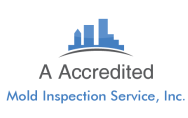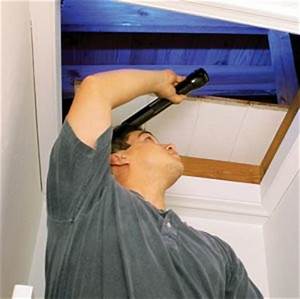 Mold Testing
Mold Testing
V.S.
Mold Inspections
At A Accredited Mold Inspection Service, Inc. We specialize in quality mold testing and mold inspection services for residents of South East Florida. We offer mold testing in West Palm Beach, Coral Springs, Plantation, Weston, Ft Lauderdale, Aventura, Hallandale, Miami, and Coral Gables, Fl.
I have conducted mold testing on every mold inspection I have ever conducted from 2004 to the present. However, the evidence gained by a trained mold specialist during a visual inspection is more important than mold testing.
Only a proper and detailed mold inspection can properly locate a mold problem. A mold inspection is needed to diagnose the root cause of the problem. A proper mold inspection lets the inspector know what needs to be done to get rid of the mold. Thus, mold testing is limited, however mold testing limitations are not a problem when done in conjunction with a proper mold inspection.
Some Mold Testing Limitations
Inability to Detect Hidden Molds
Often mold is hidden inside walls, behind paint, cabinets, baseboards or other building materials.
Mold samples are pretty bad at detecting hidden mold problems. If mold is hidden the spores often do not enter the air and as a result do not show up in air samples. Hidden molds does not usually show up in air samples, however the chemicals releases by such mold can still cause health problems and cause mold odors.
Spending too much time and focus on testing your air can be distracting and increases the chances of missing visual indications of past water damage that caused hidden mold. While a detailed visual mold inspection will not guarantee finding hidden mold. A detailed visual mold inspection greatly increases the chance of finding such mold.
Disturbances
If a property is undisturbed by human movement and air movement, then the mold spores often settle out of the air. Settled spores do not readily show up in any air samples. I have observed more than once that very moldy vacant properties sometimes have much lower air sample results than expected. This is because in the absence of human activity and air movement the spores settle onto horizontal surfaces. One example that comes to mind is a condo in Century Village in West Palm Beach.
Large amounts of surface mold was on everything, however the property was vacant. Because the air and mold were not disturbed in the vacant property, spore levels were much lower than expected.
On the other hand, if a property is disturbed by sweeping, vacuuming, or strong fan-induced air movement, tiny amounts of mold can be stirred up. Disturbed air or surfaces can change sample results drastically making a property look moldier than it normally is.
Excessive Outdoor Air Intrusion
If a door or window is opened prior to sampling, then it is possible that no meaningful mold testing interference will occur. However, if multiple doors or windows are opened, and if it is windy outside a problem can occur. In such cases it is much more likely that cross ventilation will occur. The chances of the indoor air sample results being altered by outdoor air intrusion increases under these circumstances.
Mold In AC Units
When mold is growing inside an AC unit or inside AC ducts mold will often not show up in the air samples. Even if the air is blowing directly onto the inspectors sampling device the mold may not register in sample results. However, if the ducts or AC are disturbed prior to sampling, then spore levels can temporarily increase drastically.
Mold Testing Susceptibility to Intentional Manipulation
Small Samples
I have personally observed on more than one occasion obvious intentional mold testing manipulation attempts. Clients never pick up on such scams but they know something is wrong so they contact us for a second opinion.
One type of manipulation that I have observed about three times is that of taking a very small sample of air. Such samples have always involved the use of Micro 5 cassettes that already sample a very small amount of air. It is perfectly acceptable to take a small 25-liter sample of air with a Micro 5. They take small, quick, but reliable samples. They do the job just fine despite 25 liters being a very small amount of air to sample.
However, a problem occurs when the inspector samples the air for a very short period of time with a Micro 5. They intentionally decrease the already small 25-liter air sample to 5 liters of air. This is less air than what the manufacturer recommends. In such cases, results are not statically valid. When the lab receives such a sample, they are forced to multiply the raw count of spores by a large number. They multiply in such a way that the results are meaningless and inflated. This action causes what should look like a normal reading to look very elevated and scary. The inspector can use these results to falsely claim that a property’s air is very moldy when it is not. Once I helped an attorney win a legal case when I discovered such manipulation.
Sample Swapping
Another form of sample manipulation is sample swapping. An inspector takes a sample of a clean property then swaps it for a sample from a moldy property. This action also causes clean property to look moldy. Dis-honest inspectors use these results to falsely claim that a property is moldy when it is not.
I once did an inspection at a brand new high end home in Martin County that was spotless and mold problem free. A previous inspector reported insane levels of toxic black mold on spotless metal surfaces and in the air. Because of this the tenants broke their lease and moved out. My mold inspection and samples from the same locations indicated very clean conditions. Toxic black mold does not grow on clean dry metal. If it did it would be visible and obvious. The samples from the previous inspector were undoubtedly from a different property. I instructed the client to contact the licenses board and report the dishonest inspector.
Another form of sample swapping involves swapping the outdoor sample with an indoor sample and making the interior of a property look as moldy as the outdoor air. Often outdoor air is more moldy than indoor air if a building is mold free. You can tell this scam by the abundance of outdoor spores in the indoor sample.
Often new inspectors do not realize how easy it is for all the above types of sample fraud to be identified. Such inspectors fortunately do not last long in the industry, eventually they are caught and exposed.
Too Many Samples
If a client is wealthy and has anxiety over mold an inspector may be prone to talk the client into taking more samples than are needed. The benefit to the inspector is that they charge the client more money for so many samples without any justifiable return on the client’s investment. The downside to the client is that the inspector is wasting the clients’ money. The downside to the inspector’s productivity is that the inspector is wasting time. The inspector takes many useless samples instead of doing an inspection or conducting some other important tasks.
Too Few Samples
By this point it seems that I am saying that samples are useless. In all truth, I take samples on every inspection because they add credibility to the report for the client. In addition, if inspectors were able to take insane numbers of samples, then samples would be very beneficial. Mold testing limitations would not be a problem if we could take hundreds of samples from every property we inspect. Samples are meaningless in many cases because it is not feasible to take enough samples to the point that we can find the mold with samples.
Taking truly meaningful types of samples and a truly meaningful number of samples would be too labor intensive and time consuming for the inspector. Such sampling would be too expensive for the client. In addition, such a process would result in the property being damaged by the inspector.
About Inner Wall Samples
If every inspector was able to take an inner wall sample inside every wall then sampling would be more beneficial. Of course, this would require more than one sample per wall. If the wrong spot on the wall was sampled, then mold in that wall would be missed. So, a sample would have to be taken every 2 feet or so inside every wall.
In addition, it would be best to take samples at the bottom of each wall and at the top of each wall. Next all baseboards should be removed so that areas behind baseboards can be inspected and sampled.
Unfortunately, time constraints on the inspector, and cost constraints on the client make it impossible to take as many inner wall samples as should be taken in most cases.
In Conclusion
I could go on about how flawed and unreliable sampling can be. I could go on about how limited mold testing is not productive. Let me summarize my point by saying that 95% or more of the helpful information gathered during a mold inspection comes from the inspection and not mold testing.
Mold testing will almost always miss hidden mold. A detailed inspection will sometimes uncover moisture evidence that may point to area where hidden mold may be. When hiring an inspector make sure they have the knowledge and experience needed to do a proper visual mold inspection.
About Us
A Accredited provides mold testing and mold inspection services for homeowners and building managers in South Fl. We have been in business since 2004.
Remember to call A Accredited for all of your mold testing, and more importantly all of your mold inspection needs.



